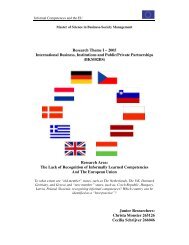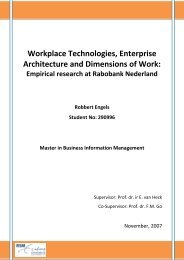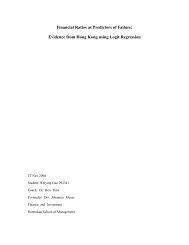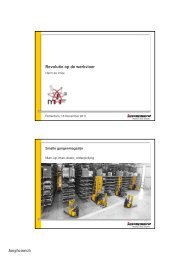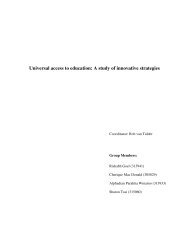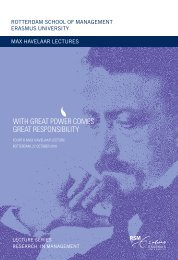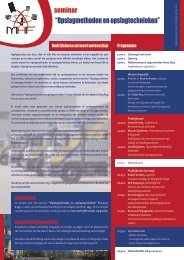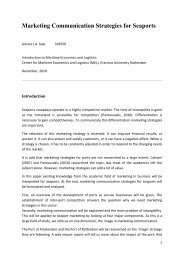here - ERIM - Erasmus Universiteit Rotterdam
here - ERIM - Erasmus Universiteit Rotterdam
here - ERIM - Erasmus Universiteit Rotterdam
Create successful ePaper yourself
Turn your PDF publications into a flip-book with our unique Google optimized e-Paper software.
A validation Study of House of Quality key performance indicators<br />
When we look to similarities between traditional and virtual communities, three core components<br />
are found to be similar (Kozinets 2001, Muniz & O’Guinn 2001 p.418):<br />
Consciousness of kind: members of the virtual community feel a strong connection towards<br />
each other and see themselves as a group although they have never met. This sets them<br />
apart from non-members.<br />
Shared rituals and traditions: members of a community act and behave to the norms and<br />
values of the community w<strong>here</strong> they belong to.<br />
A sense of Moral responsibility: members of a community feel a sense of responsibility to<br />
each other and the community itself.<br />
As mentioned above, t<strong>here</strong> are similarities between virtual communities and traditional<br />
communities. Besides the main difference in the common space in which traditional and virtual<br />
communities occur, another important difference is that members participating in virtual<br />
communities participate on a voluntary base (De Valck, 2005). The “only” consequence of leaving the<br />
virtual community is the end of a membership. Within traditional communities joining and leaving<br />
the community is much more difficult because often members grow up in these communities.<br />
Hagel and Armstrong (1997) developed the virtual community business model which identifies five<br />
defining characteristics of virtual communities:<br />
Distinctive focus: within the virtual community people with the same interests come together. A<br />
distinctive focus helps (potential) members to understand what resources can be found within the<br />
community. Organizers of the community create a specific climate and create a set of norms and<br />
values. Members have to act to these norms and values.<br />
Ability to integrate content and communication: the virtual community makes it possible to share a<br />
lot of different published information. Members not only interact with each other about the<br />
credibility of the content, but also with the publishers. This can result in credible, valuable and<br />
reliable information which for example can be used in the purchasing process of a product of service.<br />
Appreciation of member-generated content: members participate within the community by giving<br />
opinions, sharing experiences, discussing products or services. The information and knowledge<br />
provided by a certain member can be valuable for the community and its members. These virtual<br />
exchanges of a certain member can for example influence certain buying behaviour of other<br />
members.<br />
Access to competing publishers and vendors: much more as in the traditional environment, the<br />
virtual environment offers (potential) online consumers the possibility to compare many publishers<br />
27




